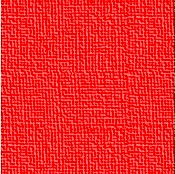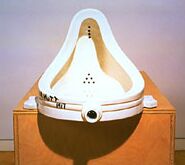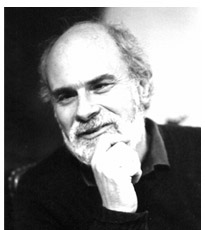-
PHIL340
-
Philosophy of Art

What, if anything, distinguishes works of art from mere real
things? We will examine attempts to present systematic, justified
answers to this central question in Philosophy of Art. We will
consider three pre-20th century attempts: an imitation theory, a
beauty theory, and an expression theory. We then consider a 20th
century version of each type of theory. Then we pause to reflect
on two 20th century developments--one in Art and the other in
Philosophy. These developments lead to a critique of an assumption
at the foundation of each of the theories we have considered. We
will consider certain trends in the Philosophy of Art in light of
that critique. Along the way, we will see how attempts to answer
our central question, "What distinguishes art from
non-art?" relate to the question, "What, if anything,
makes one work of art more aesthetically valuable than another
work of art?"
Texts:
Aesthetics: A Critical Anthology. Dickie, Scalfani,
and Roblin (eds.). [DSR]
The Transfiguration of the Commonplace. Danto.
The Philosopher's Dictionary. Martin.
On reserve:
Aesthetics: An Introduction. Dickie. [D]
Selections by Tolstoy, Langer, Duchamp, Wittgenstein, and Cohen.
Requirements:
Term paper(30%), mid-term exam (30%), final exam (40%).
Outline/Schedule of Readings:
1. Philosophical Analyses. Tolstoy on Reserve
2. Three Pre-20th Century Theories.
A. An imitation theory/Plato DSR10-23, D32-38
B. A beauty theory/Aristotle DSR32-47, D35-38
C. An expression theory/Tolstoy DSR57-63, D38-43
3. 20th Century Versions.
A. A beauty theory/Bell DSR64-72, D70-78
B. An imitation theory/Langer On Reserve
C. An expression theory/Collingwood DSR96-118. D84-95
4. 20th century developments in art. Duchamp on Reserve
5. The Wittgensteinian Critique of the Essence
Assumption. On Reserve
Mid-term Exam
6. Post-Wittgensteinian Philosophies of Art
A. Family Resemblances. DSR133-137, 138-51, 152-59
B. Institutional Theories. D98-108
7. Danto's Transfiguration.
What,
then, is Art?
Definitions of Art.
Some
Links to Readymades:
http://post-dogmatist-arts.net/museum/collage/readymades.html
http://www.creview.com/artcrit/ac9wad.htm
http://www.franceweb.fr/zumba/-Readymade.html#Fountain

|

Duchamp's
Fountain

Danto's
Arthur C. Danto

Rembrandt's
The Polish Rider
LU
Philosophy Conferences
|
|


